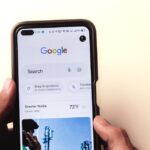Landing Page Optimization for Higher PPC Conversions
Effective landing page optimization is the bedrock of successful Pay-Per-Click (PPC) campaigns. While compelling ad copy and precise keyword targeting draw potential customers to your digital doorstep, it is the landing page that ultimately converts interest into action. A well-optimized landing page acts as a dedicated conversion machine, meticulously designed to guide visitors towards a specific desired outcome, be it a purchase, a lead form submission, a download, or a sign-up. The synergy between a highly relevant PPC ad and a perfectly tailored landing page is paramount; without it, advertising budgets are squandered, and conversion opportunities are lost. Understanding this symbiotic relationship and investing deeply in landing page optimization is not merely a best practice but a fundamental requirement for achieving a superior return on ad spend (ROAS).
The Symbiotic Relationship: PPC Ads and Landing Pages
The journey of a prospective customer in a PPC campaign begins with their search query, leading to an ad impression, a click, and then, crucially, their arrival on your landing page. This journey must be seamless and logical. Any disconnect between the ad’s promise and the landing page’s content immediately introduces friction, leading to high bounce rates and low conversion rates. Google’s Quality Score algorithm explicitly factors in “Landing Page Experience,” underscoring the importance of relevance, transparency, and ease of navigation. A strong Quality Score not only improves ad position but also lowers cost-per-click (CPC), directly impacting the profitability of your campaigns.
Ad-to-Landing Page Congruence: The cornerstone of this relationship is congruence. The headline, unique selling proposition (USP), and call to action (CTA) presented in the ad must be consistent with the messaging and offering on the landing page. If an ad promises “50% off all shoes,” the landing page must immediately display “50% off all shoes” prominently. Ambiguity or a bait-and-switch approach will erode trust instantly. This congruence extends beyond mere words to visual cues, brand identity, and the overall tone.
Managing User Expectations: PPC ads create an expectation in the user’s mind. The landing page’s primary role is to fulfill that expectation efficiently and effectively. If the ad targets users searching for “emergency plumbing services,” the landing page should not only confirm the availability of such services but also make it incredibly easy for the user to schedule one or get an immediate quote. Anticipating user intent and delivering a precise, relevant solution on the landing page is critical for managing expectations and driving conversions.
The User Journey Perspective: Consider the user’s mindset at each stage. They clicked your ad because it resonated with their immediate need or interest. Upon landing, they are seeking confirmation and validation that they are in the right place, followed by clear guidance on how to achieve their goal. Optimizing a landing page from a user journey perspective means mapping out the desired path, identifying potential points of friction, and streamlining the experience to remove obstacles and encourage progression towards the conversion goal. This includes intuitive navigation (even if minimal), clear value propositions, and unambiguous calls to action.
Core Principles of High-Converting Landing Pages
While the specific elements of a landing page may vary depending on the industry, product, or service, several universal principles underpin all high-converting designs. Adhering to these principles ensures that your landing page addresses the fundamental psychological and practical needs of your visitors.
1. Relevance (Ad-to-LP Congruence): As discussed, this is non-negotiable. The landing page must be a direct continuation of the ad. Use dynamic keyword insertion where appropriate to mirror the user’s search query in the page’s headline. Tailor content to specific ad groups, ensuring that each landing page speaks directly to the unique needs of the segment it targets. Irrelevance leads to immediate bounce.
2. Clarity (Messaging and USP): A visitor should grasp what you offer and why it matters within seconds of landing. The Unique Selling Proposition (USP) must be front and center, communicated with crystal clarity. Avoid jargon, ambiguity, and information overload. Use concise, benefit-oriented language that speaks directly to the visitor’s pain points and how your solution alleviates them. The purpose of the page and the desired action must be immediately evident.
3. Credibility (Trust Elements): In today’s digital landscape, trust is a valuable currency. Visitors are naturally skeptical. High-converting landing pages build credibility through various trust signals:
- Social Proof: Testimonials, reviews, case studies, client logos, social media mentions.
- Security Badges: SSL certificates, payment gateway logos, security trust seals (e.g., McAfee SECURE).
- Guarantees & Policies: Money-back guarantees, privacy policy links, terms of service.
- Contact Information: Clear and accessible contact details (phone, email, address).
- Awards & Certifications: Industry recognition, professional affiliations.
- Expertise: Displaying team photos, bios, or thought leadership content if relevant.
4. Value (Benefits and Solutions): People don’t buy products or services; they buy solutions to their problems or ways to achieve their desires. Focus relentlessly on the benefits your offering provides, not just its features. How will it make their lives easier, save them money, improve their health, or bring them joy? Articulate the tangible outcomes and positive transformations your offering delivers. Emphasize why your solution is the best choice for them.
5. Call to Action (Compelling and Clear): The CTA is the gateway to conversion. It must be prominent, unambiguous, and compelling. Use action-oriented language (e.g., “Get Your Free Quote Now,” “Download the Ebook,” “Start Your Free Trial”). Ensure there’s a single, primary CTA that stands out visually. Secondary CTAs can exist but should not detract from the main goal. The CTA’s text, color, size, and placement are all critical for maximizing click-through rates.
6. Usability (Navigation and Responsiveness): A seamless user experience is crucial. The landing page should be easy to navigate, even if navigation is intentionally limited to prevent distractions. Key elements should be logically arranged and easily accessible. More importantly, the page must be fully responsive, adapting flawlessly to various screen sizes and devices (desktops, tablets, smartphones). Mobile-first design is no longer a luxury but a necessity, given the prevalence of mobile searches and ad clicks.
7. Speed (Page Load Time): In an age of instant gratification, slow-loading pages are conversion killers. Every second counts. Visitors will abandon a page if it takes too long to load, especially on mobile. Optimize images, leverage browser caching, minify CSS/JS, and utilize content delivery networks (CDNs) to ensure lightning-fast load times. Google’s Core Web Vitals heavily emphasize page speed as a ranking factor, which indirectly influences Quality Score and user experience.
Key Elements of a High-Converting Landing Page in Detail
Beyond the core principles, the specific components of a landing page must be meticulously crafted and optimized. Each element plays a distinct role in guiding the user towards conversion.
1. The Headline (H1): The First Impression
- Purpose: To immediately grab attention, confirm relevance, and communicate the primary value proposition. It’s often the first thing a visitor reads.
- Best Practices:
- Clarity & Conciseness: Be direct. What is this page about?
- Relevance: Mirror the ad copy and search query (consider DKI).
- Benefit-Oriented: Focus on what the user gains.
- Emotional Appeal: Connect with the user’s pain points or desires.
- Urgency/Scarcity (Optional): If applicable, to prompt immediate action.
- Types:
- Direct: “Get a Free Marketing Audit.”
- Benefit: “Save 30% on Your Energy Bills.”
- Question: “Tired of High CPA?”
- Curiosity: “The Secret to Doubling Your Leads.”
- News: “Introducing Our New AI-Powered CRM.”
- Optimization: A/B test different headline variations. Test length, tone, and specific keywords. Ensure it’s visually prominent and easy to read.
2. Sub-headlines (H2, H3): Supporting the Main Message
- Purpose: To elaborate on the main headline, break down complex ideas, highlight specific benefits, and guide the visitor through the page’s content.
- Best Practices:
- Provide more detail than the main headline.
- Focus on specific features or benefits that support the overall value proposition.
- Use bullet points or short paragraphs under sub-headlines for readability.
- Break up long blocks of text.
3. Hero Section/Above the Fold: The Immediate Impact Zone
- Definition: The portion of the landing page visible without scrolling.
- Purpose: To instantly convey the core message, primary benefit, and call to action. It sets the tone for the entire page.
- Elements:
- Primary Headline: As above.
- Supporting Sub-headline/Text: Briefly elaborates.
- Primary Visual: A relevant image or video that supports the message.
- Primary Call to Action (CTA): Prominently displayed.
- Optional: Key trust signals (small logos, star ratings).
- Optimization: Ensure all critical information is immediately accessible. Test different visuals and CTA placements.
4. Unique Value Proposition (UVP): Why Choose You?
- Purpose: To articulate clearly and concisely what makes your offering superior or different from competitors, and why the visitor should choose you.
- Elements:
- Headline: Often embodies the UVP.
- Sub-headline: Expands on it.
- Benefit List: 3-5 concise bullet points highlighting key advantages.
- Problem/Solution Framing: Briefly state the problem you solve and how your offering is the ideal solution.
- Best Practices:
- Be specific and quantifiable where possible (e.g., “Reduce Costs by 20%”).
- Focus on customer outcomes, not just product features.
- Address a specific pain point or desire.
5. Benefit-Oriented Copywriting: Speaking to the User’s Needs
- Shift from Features to Benefits: Instead of saying “Our software has a robust CRM module” (feature), say “Manage all your customer interactions effortlessly and improve sales conversions by X%” (benefit).
- Persuasive Language: Use active voice, strong verbs, and emotional triggers.
- Address Pain Points: Show empathy by acknowledging the user’s struggles and then present your solution as the remedy.
- Storytelling: Briefly outline how your solution transforms a user’s situation from negative to positive.
- Scannability: Use short paragraphs, bullet points, bolding, and whitespace to make the copy easy to consume quickly. Most users scan before they read.
6. Visuals: Images, Videos, Infographics
- Purpose: To break up text, convey information quickly, reinforce branding, and evoke emotion.
- Types:
- High-Quality Images: Relevant to your product/service, showing real people (if appropriate) to build connection. Avoid generic stock photos.
- Explainer Videos: Highly effective for complex products or services, demonstrating usage or benefits. Keep them concise (60-90 seconds).
- Infographics: For presenting data, processes, or comparisons in an easily digestible visual format.
- Optimization:
- Relevance: Visuals must directly support the message.
- Quality: Professional, high-resolution.
- Optimization: Compress images for fast loading (WebP format where supported). Host videos on platforms like YouTube/Vimeo rather than directly on your server.
- Placement: Strategically place visuals near relevant copy.
- Alt Text: Include descriptive alt text for SEO and accessibility.
7. Call to Action (CTA): The Conversion Gateway
- Purpose: To clearly instruct the visitor on the next desired step and motivate them to take it.
- Characteristics of a Strong CTA:
- Clarity: Use action-oriented verbs: “Download,” “Get,” “Start,” “Sign Up.” Avoid vague terms like “Submit.”
- Compelling: Add value or urgency: “Get Your Free Ebook Now,” “Claim Your Discount Today.”
- Prominence: Visually stand out with contrasting colors. Be large enough to be easily clickable, especially on mobile.
- Placement: Place strategically above the fold, mid-page, and at the bottom.
- Consistency: If you have multiple CTAs, ensure their text and design are consistent if they lead to the same action.
- A/B Testing: Test different CTA button colors, text, sizes, and placements. Even minor changes can significantly impact conversion rates.
8. Forms: Data Collection with Minimal Friction
- Purpose: To collect necessary information from leads.
- Optimization:
- Minimal Fields: Only ask for essential information. Each additional field reduces conversion rates. For initial lead generation, name and email are often sufficient.
- Clear Labels: Label fields clearly and provide placeholder text where helpful.
- Error Messages: Provide helpful, user-friendly error messages if validation fails.
- Pre-population: If possible (e.g., for returning users), pre-populate fields.
- Multi-step Forms: For longer forms, break them into multiple steps to reduce perceived effort. Show progress indicators.
- Mobile-Friendly Input: Ensure keyboard types (numeric, email) are optimized for mobile.
- Privacy Statement: Link to your privacy policy near the form.
- Security Reassurance: Small icons or text stating “Your information is secure.”
9. Social Proof: Leveraging the Wisdom of the Crowd
- Purpose: To build trust and credibility by showing that others have successfully used or endorsed your product/service.
- Types:
- Testimonials: Short, impactful quotes from satisfied customers, ideally with names, photos, and company affiliations. Video testimonials are even more powerful.
- Reviews/Ratings: Display star ratings (e.g., from Google My Business, Yelp, Trustpilot) or snippets from reviews.
- Case Studies: Detailed accounts of how your solution helped a specific client achieve measurable results.
- Client Logos: Logos of well-known companies you’ve worked with.
- Endorsements: From industry influencers or experts.
- Social Media Mentions/Shares: Screenshots of positive comments or high share counts.
- Quantitative Proof: “10,000+ satisfied customers,” “Rated 4.8/5 stars.”
- Placement: Strategically throughout the page, especially near the CTA or UVP.
10. Trust Signals & Security: Reassuring Visitors
- Purpose: To alleviate visitor anxieties about sharing information or making a purchase.
- Elements:
- SSL Certificate: Indicated by “https://” in the URL and a padlock icon. Essential for data security.
- Privacy Policy & Terms of Service Links: Easily accessible in the footer.
- Guarantees: Money-back guarantee, satisfaction guarantee, uptime guarantee.
- Security Badges: Logos from trusted security providers (e.g., Norton, McAfee, VeriSign).
- Payment Logos: If it’s an e-commerce page, display accepted payment methods (Visa, MasterCard, PayPal).
- Contact Information: Physical address, phone number, email address. Shows transparency.
11. Mobile Responsiveness: Design for Every Device
- Principle: Your landing page must look and function perfectly on any screen size.
- Key Considerations:
- Fluid Layouts: Content adjusts to screen width.
- Large, Tappable Elements: Buttons and links are easy to click with a finger.
- Legible Fonts: Text scales appropriately.
- Optimized Images/Videos: Load quickly and scale well.
- Simplified Navigation: Often a hamburger menu or minimal links.
- Touch-Friendly Forms: Easy to fill out on mobile keyboards.
- Viewport Meta Tag: Ensures proper scaling.
- AMP (Accelerated Mobile Pages): Consider for incredibly fast mobile loading if content is static.
12. Page Layout & Flow: Guiding the Eye
- Visual Hierarchy: Use size, color, contrast, and placement to guide the visitor’s eye to the most important elements (headline, CTA).
- Whitespace: Crucial for readability and drawing attention to key areas. Avoid clutter.
- F-Pattern & Z-Pattern: Understand how users typically scan pages. Place critical information along these patterns.
- F-Pattern (text-heavy pages): Users scan horizontally across the top, then down the left side, then horizontally again. Place headline, key points, and CTA along this path.
- Z-Pattern (less text, more visuals): Users scan from top-left to top-right, then diagonally down to bottom-left, then horizontally to bottom-right. Ideal for pages with prominent visuals and clear sections.
- Logical Flow: The page should tell a story, leading the visitor from problem to solution to action.
13. Legal Disclaimers & Footer:
- Purpose: To provide necessary legal information and supplementary links without distracting from the main conversion goal.
- Elements: Privacy Policy, Terms of Service, Copyright, Contact Information, perhaps a brief “About Us.”
- Placement: Typically in the footer, out of the main conversion path but accessible.
Technical Optimization for Performance
Beyond the visual and persuasive elements, the underlying technical infrastructure of your landing page significantly impacts its effectiveness and, by extension, your PPC campaign’s success. Technical optimization is about ensuring your page loads quickly, is accessible, and correctly tracks user interactions.
1. Page Load Speed: The Need for Speed
- Why it Matters: Directly impacts user experience, bounce rates, Quality Score, and conversion rates. Google prioritizes fast-loading pages.
- Key Optimization Techniques:
- Image Optimization:
- Compression: Use tools (e.g., TinyPNG, ImageOptim) to compress images without losing quality.
- Resizing: Serve images at the exact dimensions they are displayed.
- Next-Gen Formats: Use WebP format which offers superior compression and quality compared to JPEG/PNG (ensure browser compatibility or fallback).
- Lazy Loading: Load images only when they enter the viewport.
- Caching:
- Browser Caching: Instruct browsers to store static files (CSS, JS, images) locally so they don’t have to re-download on subsequent visits.
- Server-Side Caching: Reduces database queries and server processing time.
- Minify CSS, JavaScript, and HTML: Remove unnecessary characters (whitespace, comments) from code files to reduce their size.
- Content Delivery Network (CDN): Distributes your content to servers globally, delivering it from the server geographically closest to the user, reducing latency.
- Reduce Server Response Time: Choose a reputable hosting provider, optimize database queries, and use efficient server-side scripts.
- Eliminate Render-Blocking Resources: Prioritize critical CSS/JS to load first, deferring non-essential resources to improve perceived load speed.
- Minimize Redirects: Each redirect adds latency.
- Font Optimization: Host fonts locally or use optimized Google Fonts delivery.
- Image Optimization:
2. Mobile-First Design & AMP:
- Mobile-First Principle: Design for the smallest screen first, then scale up for larger devices. This ensures a streamlined, performant experience on mobile from the outset.
- Responsive Web Design: Uses fluid grids and flexible images to adapt layout to screen size. Most common and recommended approach.
- Accelerated Mobile Pages (AMP): A Google-backed open-source project that creates extremely fast-loading mobile pages by restricting certain HTML/CSS/JS elements. Ideal for content-heavy landing pages where speed is paramount, but less suitable for highly interactive pages. Consider for blog posts, articles, or simple lead gen pages linked from PPC ads.
3. Tracking & Analytics Setup: Measuring Success
- Purpose: To collect data on user behavior, identify conversion points, and measure the effectiveness of optimization efforts.
- Essential Tools:
- Google Analytics (GA4): Comprehensive web analytics platform. Set up goals for conversions (form submissions, purchases, button clicks).
- Google Ads Conversion Tracking: Directly links conversions back to specific keywords, ads, and campaigns within Google Ads. Crucial for optimizing bids and campaigns.
- Heatmaps & Session Recordings (e.g., Hotjar, Crazy Egg):
- Heatmaps: Visually show where users click, move their mouse, and scroll. Identify areas of interest and friction.
- Session Recordings: Replay individual user sessions to understand their complete journey, highlighting points of confusion or abandonment.
- Form Analytics: Track field completion rates, time spent on fields, and where users drop off in forms.
- Implementation:
- Ensure tracking codes are correctly installed (Google Tag Manager is highly recommended for managing multiple tags).
- Define clear conversion goals and micro-conversions.
- Set up event tracking for specific interactions (e.g., video plays, tab clicks, form errors).
- Implement cross-domain tracking if your funnel spans multiple domains.
4. Schema Markup (Structured Data):
- While less directly impactful for PPC landing pages (which are usually reached directly from ads, bypassing organic search results), schema markup can provide rich snippets in organic search results and potentially enhance visibility if your landing page might also be discovered organically. For PPC, its direct benefit is minimal, but understanding its role in broader SEO can be valuable for overall web presence. Focus on core CRO for PPC LPs.
Strategic Optimization & Testing
Landing page optimization is not a one-time task; it’s an ongoing process of hypothesis, experimentation, and refinement. Strategic testing is crucial for uncovering what truly resonates with your audience and drives higher conversions.
1. A/B Testing (Split Testing): The Iterative Improvement Process
- Concept: Comparing two versions (A and B) of a single element or a full page to see which performs better against a defined conversion goal. Traffic is split evenly between the two versions.
- What to Test (High-Impact Elements):
- Headlines & Sub-headlines: Often have the biggest impact.
- Call to Action (CTA): Text, color, size, placement.
- Hero Image/Video: Different visuals, or static vs. video.
- Unique Value Proposition: Different ways of articulating your core offer.
- Form Length/Fields: Number of fields, single vs. multi-step.
- Social Proof: Placement, type, and quantity of testimonials/logos.
- Page Layout: Entire page structure, element order.
- Pricing Presentation: If applicable.
- Process:
- Formulate a Hypothesis: Based on data (analytics, heatmaps, user feedback), identify a problem and propose a solution. “We believe changing the CTA button color from blue to orange will increase clicks by X% because orange creates more urgency.”
- Design the Variations: Create version B (the challenger) based on your hypothesis.
- Run the Test: Use A/B testing tools (e.g., Google Optimize, Unbounce, Optimizely) to split traffic.
- Monitor & Analyze: Track conversions for both versions. Ensure statistical significance before declaring a winner. Don’t stop a test too early.
- Implement or Iterate: If the challenger wins, implement it. If not, learn from the results and formulate a new hypothesis.
- Key Considerations:
- One Variable at a Time: To accurately determine causality.
- Statistical Significance: Ensure results are not due to random chance. Tools will often provide this.
- Duration: Run tests long enough to gather sufficient data and account for weekly traffic fluctuations.
- Focus on Key Metrics: Primarily conversions, but also micro-conversions, bounce rate, time on page.
2. Multivariate Testing (MVT): For Complex Interactions
- Concept: Testing multiple variables on a single page simultaneously to understand how they interact with each other. For example, testing different headlines and different images and different CTA texts at the same time.
- When to Use: When you have high traffic and want to optimize multiple elements without running sequential A/B tests. MVT requires significantly more traffic than A/B testing.
- Complexity: More complex to set up and analyze, requiring specialized tools.
3. Personalization: Tailoring the Experience
- Concept: Delivering dynamic content based on user characteristics or behavior.
- How it applies to PPC:
- Dynamic Keyword Insertion (DKI): Automatically inserts the user’s search query into the landing page headline or body copy. This creates hyper-relevance.
- Geo-targeting: Displaying localized content, offers, or contact information based on the user’s location.
- Retargeting/Remarketing: Showing specific landing page content to users who have previously interacted with your site or ads.
- User Segment-Specific Content: If you have different ad campaigns targeting different demographics or interests, ensure the landing page reflects that specific segment’s needs (e.g., B2B vs. B2C messaging, different product lines).
4. Audience Segmentation & Targeting:
- Your PPC campaigns already segment audiences. Your landing pages should reflect these segments. A landing page designed for a “new customer seeking information” will differ from one for a “returning customer ready to purchase” or a “B2B client needing a detailed whitepaper.” Ensure your landing pages are aligned with your ad group’s targeting strategy.
5. Competitor Analysis:
- Purpose: To identify successful strategies, uncover new ideas, and understand industry benchmarks.
- What to Look For:
- Competitors’ landing page layouts, messaging, CTAs.
- Their value propositions and how they differentiate.
- Types of trust signals they use.
- Their pricing models or special offers.
- Tools: SpyFu, SEMrush, Ahrefs can reveal competitors’ PPC ads and landing pages. Manual review is also essential. Don’t copy, but learn and innovate.
6. Heatmaps & User Behavior Analytics:
- Beyond A/B Testing: Provides qualitative insights into why users behave the way they do.
- Click Maps: Show where users click (and don’t click), indicating areas of interest or confusion.
- Scroll Maps: Reveal how far down users scroll, identifying content that is seen and content that is missed.
- Confetti Maps: Show individual clicks grouped by referral source, device, or other attributes.
- Session Replays: Watch actual user sessions to understand flow, identify bugs, points of friction, or unexpected behavior.
- Funnel Analysis: Track user progression through your conversion funnel and identify drop-off points.
7. User Feedback: Direct from the Source
- Surveys/Polls: On-page surveys (e.g., using Hotjar) can ask visitors why they are not converting or what information they are seeking.
- User Testing: Recruit a small group of target users and observe them interacting with your landing page. Ask them to complete tasks and think aloud. This can uncover major usability issues that analytics might miss.
- Live Chat Transcripts: Analyze common questions or pain points expressed in live chat conversations.
Advanced Conversion Rate Optimization (CRO) Techniques
Beyond the fundamental elements and testing, several advanced CRO techniques leverage psychological principles and sophisticated tracking to further boost conversion rates.
1. Cognitive Biases in Design:
- Scarcity: “Only 3 left in stock!” “Offer ends tonight!” Creates a fear of missing out.
- Urgency: “Act now!” “Limited-time offer!” Prompts immediate action.
- Reciprocity: Offering something of value upfront (e.g., a free guide, a consultation) in exchange for an email address or other information.
- Authority: Featuring endorsements from experts, industry leaders, or showcasing prestigious awards/certifications.
- Commitment & Consistency: Once a user takes a small step (e.g., downloads a free guide), they are more likely to take a larger step (e.g., sign up for a demo). Multi-step forms can leverage this.
- Social Proof: (Already covered) The idea that people will do what they see other people doing.
- Anchoring: Presenting a higher-priced option first to make subsequent options seem more reasonable.
- Framing: Presenting information in a way that influences perception (e.g., “90% fat-free” sounds better than “10% fat”).
- Loss Aversion: Highlighting what users stand to lose if they don’t take action (e.g., “Don’t miss out on these savings!”).
2. Micro-Conversions:
- Concept: Tracking smaller, interim actions that indicate progress towards a primary conversion.
- Examples: Clicking a video, downloading a datasheet, viewing a pricing page, spending a certain amount of time on the page, scrolling to the bottom.
- Benefit: Provides deeper insights into user engagement, helps identify bottlenecks in the funnel even before the final conversion step, and allows for optimization of intermediary steps.
- Implementation: Set up event tracking in Google Analytics for these micro-interactions.
3. Funnels & Nurturing:
- Landing Page as Part of a Funnel: Understand where your landing page sits in the broader customer journey. Is it top-of-funnel (lead generation), mid-funnel (consideration), or bottom-of-funnel (purchase)? The content and CTA should align with this.
- Post-Conversion Nurturing: What happens after a conversion? An automated email sequence, a thank-you page with upsell/cross-sell opportunities, or an invitation to a webinar can further engage and move the user down the funnel. Don’t let the conversion be the end of the interaction.
4. Landing Page Experience Score (Google Ads):
- Part of Quality Score: Google assesses the relevance, transparency, and ease of navigation of your landing page. A good experience score contributes to a higher Quality Score, leading to lower CPCs and better ad positions.
- Factors:
- Relevance: How well the page content matches the ad and keywords.
- Original Content: Unique and valuable content.
- Transparency: Clear business information, contact details, privacy policy.
- Ease of Navigation: Simple, clear path to information or action.
- Load Speed: Fast loading on all devices.
- Mobile-Friendliness: Optimized for mobile viewing.
- Monitoring: Regularly check your Quality Score in Google Ads and address any “Below average” or “Average” landing page experience components.
5. Dynamic Keyword Insertion (DKI) in Landing Pages:
- While primarily used in ad copy, DKI can be extended to landing page headlines and body text. If a user searches for “best SEO software” and your ad uses DKI to show “Best SEO Software,” your landing page can automatically display “The Best SEO Software for Your Business” as its headline.
- Benefits: Hyper-personalization, immediate relevance, reinforces ad message, improves Quality Score.
- Caveats: Ensure proper capitalization and grammar. Have a fallback default headline in case the keyword is too long or inappropriate. Test thoroughly.
6. Ad Extensions and Their Role:
- While not directly on the landing page, ad extensions in your PPC campaigns (e.g., sitelink extensions, callout extensions, structured snippet extensions, lead form extensions) can pre-qualify users and set expectations before they even click.
- Example: A sitelink extension to a “pricing” page on your main website. If a user clicks this, they are clearly interested in pricing, and your landing page should reflect that intent, perhaps by emphasizing value for money or direct pricing details.
- Lead Form Extensions: Allow users to submit a lead directly from the ad without visiting a landing page. This is a special case where the ad is the landing page. Optimize the form fields and messaging within the extension itself.
7. Optimizing for Different Campaign Types:
- Search Campaigns: Focus on immediate relevance, solving specific user problems, and clear CTAs. Users have high intent.
- Display Campaigns: Often used for brand awareness or retargeting. Landing pages might be more visually rich, tell a stronger story, and have slightly softer CTAs initially.
- Shopping Campaigns: Product-focused. Landing pages are typically product pages with high-quality images, detailed descriptions, reviews, and clear “Add to Cart” buttons. Speed is crucial.
- Video Campaigns: Landing pages should complement the video content. If the video introduces a product, the landing page should provide more details and a clear path to purchase or sign-up.
- App Install Campaigns: Landing pages (or direct links) should lead to the app store page, focusing on app benefits, screenshots, and reviews.
Common Landing Page Mistakes to Avoid
Even with the best intentions, several common pitfalls can derail your landing page optimization efforts. Being aware of these can save significant time and ad spend.
- Lack of Clarity: The most egregious error. If visitors can’t immediately understand what you offer or what they should do, they will leave. Avoid vague language, industry jargon, and cluttered layouts.
- Too Many Calls to Action (CTAs): Conflicting CTAs create indecision. Stick to one primary conversion goal per page. Secondary CTAs should be supportive and less prominent.
- Slow Load Times: A page that takes more than 2-3 seconds to load, especially on mobile, will experience high bounce rates. This directly impacts Quality Score and user satisfaction.
- Poor Mobile Experience: Non-responsive design, tiny text, unclickable buttons, and cumbersome forms on mobile devices are guaranteed conversion killers in a mobile-first world.
- Misaligned Messaging (Ad-to-LP Disconnect): The content and offer on the landing page must directly match what was promised in the PPC ad. Any discrepancy creates mistrust and immediate abandonment.
- No Trust Signals: Visitors are inherently cautious. Lack of testimonials, security badges, privacy policies, or contact information makes your business seem untrustworthy.
- Irrelevant Content or Information Overload: Every piece of content on the page should contribute to the conversion goal. Excessive text, irrelevant images, or distracting links will dilute the message and overwhelm the user.
- Weak or Generic Headlines: The headline is your first and often last chance to capture attention. “Welcome to Our Website” is not a compelling headline.
- Asking for Too Much Information (Forms): The more fields in your form, the lower the conversion rate. Only ask for essential information needed for the immediate conversion goal.
- No Clear Value Proposition: If you don’t clearly state why your offering is valuable and different, visitors won’t see a reason to convert.
- Ignoring Analytics and User Behavior: Launching a page and forgetting about it is a critical mistake. Continuously monitor performance metrics, analyze user behavior with heatmaps and session recordings, and use these insights to iterate.
- Not A/B Testing: Relying on assumptions instead of data. Always test hypotheses to validate changes and identify true performance improvements.
- Ignoring the Post-Conversion Experience: A conversion isn’t the end of the journey. A confusing thank-you page or lack of post-conversion communication can sour the experience and hinder future engagement.
Tools and Resources for Landing Page Optimization
A robust toolkit is essential for effective landing page optimization, enabling design, deployment, testing, and analysis.
-
Landing Page Builders:
- Unbounce: Excellent drag-and-drop builder with robust A/B testing, dynamic text replacement, and integrations. Known for its focus on conversion.
- Leadpages: User-friendly platform with templates, A/B testing, and lead capture tools.
- Instapage: Another powerful builder with a strong emphasis on personalization, ad-to-page matching, and collaboration features.
- Webflow: More flexible and powerful for custom designs, but has a steeper learning curve. Can be used for static or dynamic landing pages.
- WordPress with Page Builders (Elementor, Beaver Builder, Divi): For those already on WordPress, these plugins offer drag-and-drop functionality to create highly customized landing pages.
- ClickFunnels: Primarily focused on building entire sales funnels, but excellent for landing pages within that context.
-
Analytics and Tracking Tools:
- Google Analytics 4 (GA4): Fundamental for understanding user behavior, traffic sources, and conversion paths.
- Google Ads Conversion Tracking: Directly links conversions back to your Google Ads campaigns.
- Google Tag Manager (GTM): Simplifies the management of all your tracking tags (Analytics, Ads, Facebook Pixel, etc.) without needing to edit code directly.
- Facebook Pixel: For tracking conversions and building custom audiences for Facebook/Instagram ads.
-
Heatmapping and Session Recording Tools:
- Hotjar: Offers heatmaps (clicks, scrolls, move), session recordings, surveys, and polls.
- Crazy Egg: Similar functionality with heatmaps, scroll maps, confetti, and recordings.
- Mouseflow: Provides heatmaps, session replays, and funnel analysis.
-
A/B Testing and CRO Platforms:
- Google Optimize (Sunsetted Q3 2023, migrating to GA4): Previously a popular free A/B testing tool. Users will need to find alternatives.
- Optimizely: Enterprise-level experimentation platform for sophisticated A/B and multivariate testing.
- VWO (Visual Website Optimizer): Comprehensive platform for A/B testing, MVT, personalization, and behavioral analysis.
- Built-in features of Landing Page Builders: Unbounce, Leadpages, Instapage often include integrated A/B testing.
-
Page Speed Optimization Tools:
- Google PageSpeed Insights: Analyzes your page’s performance and provides actionable recommendations.
- GTmetrix: Provides detailed performance reports, waterfall charts, and optimization suggestions.
- WebPageTest: Advanced tool for detailed performance testing from various locations and devices.
- Pingdom Tools: Monitors uptime and performance, also offers speed tests.
-
Image Optimization Tools:
- TinyPNG / TinyJPG: Online tools for lossless image compression.
- ImageOptim (Mac) / FileOptimizer (Windows): Desktop applications for batch image optimization.
- Squoosh (Google): A progressive web app for image compression and format conversion.
-
User Feedback Tools:
- Hotjar Surveys/Polls: For on-page feedback.
- Typeform / Google Forms: For more extensive surveys.
- UserTesting.com / Lookback.io: For remote user testing sessions with recorded feedback.
-
SEO & Competitor Analysis Tools (Indirectly useful for LPO):
- SEMrush / Ahrefs / SpyFu: Analyze competitor PPC strategies, ad copy, and landing pages to gain inspiration and identify opportunities.
- Google Keyword Planner: For keyword research that can inform landing page content.
By diligently applying these principles, meticulously crafting each element, leveraging data-driven insights from tracking and testing, and continuously iterating, businesses can transform their landing pages into powerful conversion engines. This dedication not only maximizes the effectiveness of PPC ad spend but also significantly contributes to overall business growth and profitability in the highly competitive digital landscape. The journey to higher PPC conversions is an ongoing one, with landing page optimization serving as the critical compass guiding the way.











